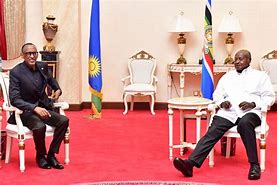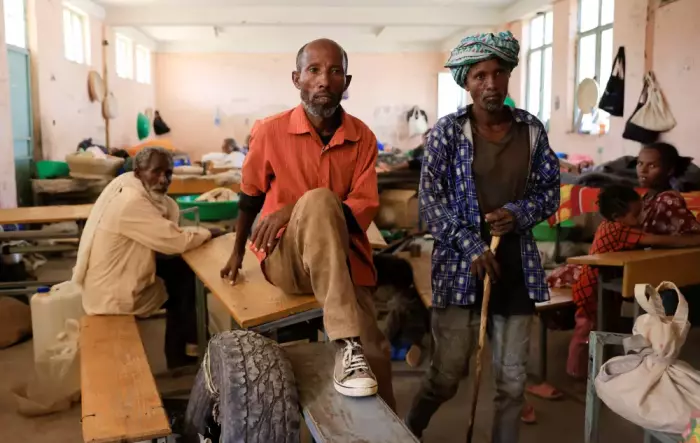
In 1931, when the colonial administration inaugurated a programme in East Africa to grow coffee for export, chiefs and Sub-chiefs were to take the lead in this programme. The administrators were representative of the colonial government at the grassroots.
The tasks were apportioned according to rank: 1,000 coffee trees for each chief; 250 for each sub-chief; and 54 plants for each rural cultivator. Such encouragement of the administrative authorities to enter into the money economy caused the chiefs to need more workers.
In the process the unpaid labour available through ubureetwa ended up contributing substantially to the enrichment of the chiefs. And so whether by design or default colonialism ended up providing both the labour and the market for the chiefs to accumulate wealth.
In her book, The Cohesion of Oppression: Clientship and Ethnicity in Rwanda, 1860-1960, Catherine Newbury quotes R. Bourgeois, a young idealistic administrator who served in the then Kamembe territory later called Kinyaga between 1933 and 1935 and who was critical of the exploitative behaviour of Tutsi chiefs.
R. Bourgeois wrote: “A Hutu came to complain to me about how the sub-chief Rwanyabugigira is treating him: When he was busy maintaining his coffee field, a representative of the subchief came and requested that he go and work for the direct profit of … [the sub-chief]; he refused, only his wife went there [to work]. The Tutsi of the territory of Kamembe continue, it seems to me, to consider the Hutu as subject to corvee at their discretion [“corveable a merci”]; it won’t be long before I discover that… [the chiefs also] view them as subject to tax at their discretion.”
And so the introduction of cash crops such as coffee and the accompanying capitalistic features exacerbated the burdens on the Hutus peasants. They had to care for their own fields and at the same time meet the increasing demand for labour from the chiefs. The chiefs were taking advantage of ubureetwa to exploit the Hutu peasants. Some Belgian administrators like Bourgeois made attempts to regulate as well as humanise the ubureetwa system of requisitioning labour without much success. Constituted for exploiting purposes in pre-colonial times, the ubureetwa could not be regulated; it just needed to be got rid of. Moreover, the rules and regulations of ubureetwa were virtually impossible to enforce. “
By the end of the Second World war, the capitalistic forces had percolated the Rwanda society to a considerable degree. This percolation had resulted in considerable degree of efficiency. The compulsory cultivation of such crops as manioc, sweet potatoes and coffee was being enforced more rigorously. There was an increase in the need for roads and akazi became more burdensome. Ubuhake also underwent wide ranging transformation. In the past it involved patrons advancing cattle to clients and thereby accruing tribute. This tribute was in payment of protection.
In the new dispensation the protection was being provided by the colonial administration which was being represented by chiefs. And so with the penetration of capitalism ubuhake became less and less necessary. At times young men would escape ubuhake by taking up employment in Europeans farms. In the circumstances pressure and efforts to abolish ubuhake gained momentum. It should be remembered that earlier on the colonial authorities had opposed the abolition of ubuhake on grounds that such measures would undermine the authorities of the chiefs.
In 1951 prodded by the UN Trusteeship Council (particularly its visiting Mission to Rwanda of 1948) the administration declared its intention to abolish ubuhake. The following year Umwami Rudahigwa issued a circular explaining the policy on abolishing the ubuhake. One of the reasons he gave for the abolition was the increase in litigation between patrons and clients. He also enumerated the positive social and economic effects of the abolition.
Later, in 1954 while the UN Visiting Mission was in Rwanda, the king and the National Council Superior issued a decree providing for the progressive dissolution of ubuhake ties and the distribution of the cows to former clients.
While the abolition of ubuhake contributed to the erosion of the chiefly legitimacy, it did very little towards eliminating the exploitation of the Hutus by the Tutsis which had been conducted through ubuhake. The Tutsis who had been patron-chiefs maintained their control of the land. And since the decree abolishing the ubukhake (and which to its credit ceded some cattle to the clients) did not provide pasturage rights for the cattle so ceded to former clients, the clients had to depend on former patrons for pasturage. In any case the ubuhake land clientship was not affected by the decree.
The other reason why the abolition of ubuhake did not affect Tutsi dominance is that much of it was historical. In the initial period of colonialism, Catholic schools had favoured Tutsi kids. They had been given the kind of education which was to prepare them for leadership.
According to Catherine Newbury: “The discrimination against Hutus introduced in Rwanda’s Catholic schools from the late 1920s meant that it was primarily the children of Tutsis who attended secondary school, entered the priesthood, worked in administration and benefited in myriad other ways from the system, even without ubuhake. the abolition of cattle clientship did not substantially threaten Tutsi power.”
Another aspect of Rwanda society which got reformed around this time was representation. Beginning from 1948 the Trusteeship Council of the United Nations had sent a Visiting Mission to tour Rwanda for several weeks from time to time. The reports of these missions expressed shock at inequalities in Rwanda social and political structure and went on to call for democratisation in preparation for Independence. The 1948 Visiting Mission recommended democratisation of “…the whole political structure as far as possible and as speedily as circumstances permit. The masses must by degrees be led to take part in the choice of their leaders, and in sanctioning important decisions, the final aim being to achieve an increasingly widespread electoral system.”
Later in July 14, 1952 the Belgian government took steps towards the reforms the Visiting Missions had talked of. They issued a decree that provided for councils at the level of sub-chiefs and territories as well as the retention of existing councils. Electoral colleges for sub-chieftaincy were then selected in 1953 by the local subchief subject to the approval of his chief and territorial administrator…the electoral college so-chosen then choose from among their members the sub-chiefdom councils. After that members of councils at higher levels were then selected from this base. As this was not by popular vote, the reforms did not go far enough in assuaging the feeling of the Hutus.
However, in 1956 the selection of the electoral colleges were done by popular vote; and the councils themselves were selected through electoral colleges. To maintain high Tutsi numbers in the electoral colleges, Tutsi chiefs engaged in a number of irregularities. Thus, for instance, the period between the announcement of the elections and the actual election process was made extremely brief. Because of the brevity of the time, many people might not have understood the meaning of the vote.
Notwithstanding that, the results were not that encouraging to the Tutsis. Tutsi representation declined by 20 per cent. Also the potential for Hutus to win the popular vote became clearer. This fact as well as the anticipation of elections scheduled later in 1959, together with the speculation that the end of colonial rule was imminent was to condition the politics for the next four years.
While these administrative and political changes did nurture the necessary objective conditions for change, the factor which played the most significant role in the politicisation of the Hutus was the Catholic Church. Paradoxically in the initial period of colonisation, the Catholic church played midwife to Tutsi privileges. However, during the 1950s the church became solid supporter of the Hutus. The volte face of the church began in the late 1930s with the change in the character of the Belgian priests then coming into Rwanda. They were mainly from the region of Belgium called Wallonia.
Back in Belgium the people from the province of Wallonia considered themselves marginilised much in the same way as the Hutus in Rwanda. Coming to Rwanda, they easily empathised with the Hutus. These sympathetic Wallonia priests were to be bolstered by the arrival in Kibagaye in 1955 of Mgr Perraudin, a Swiss citizen who shortly thereafter became the Apostolic Vicar of Rwanda.
About Mgr Perraudin, Professor Lermarchand tells us: “Whether because of his national origins, or because of his own personal predispositions, Perraudin’s democratic convictions found expression in what can only be described as a flagrant parti pris for the Hutu. To this day the name of Perraudin evokes diametrically opposed, although equally emotional, reactions from Hutu and Tutsi, being viewed by the former as nothing short of a saviour, and by the latter as a hateful sycophant, guilty of spreading racial hatred and violence among the people of Rwanda.”
In addition to facilitating the Hutus to make contacts with the outside world, the Catholic clergy also played major roles in the propaganda work for the Hutu cause. Members of the clergy are known to have ghost written some documents to which the Hutu leadership simply appended their signatures. It is believed that the lengthy and illuminating article, Plaidoyer pour le Menue Peuple, which appeared in the November 1958 issue of La Revue Nouvella and attributed to G. Cymana was written by Canon Ernotte. It is important to note that large quantities of reprints of this article was distributed to members of the Belgian Parliament.
Professor Lemarchand also suspects that even the famous “Bahutu Manifesto” was written by a Catholic priest from Kabagaye. The same priests also acted as ghost writers of other significant documents.
The Catholic church also allowed the Hutus to make use of its organisational structures. Educated Hutus who were discriminated against in employment with the government, and therefore could not attain status through their positions in government, were able to gain status and recognition through their activities in the church. Hutu leaders from different regions often came together during church celebrations.
The 1950 celebrations of the Save Mission’s Fifty-Year Jubilee was the first occasion at which Hutus from different areas discussed political and economic inequalities and the Tutsi discrimination against Hutus. That same year was when the Legion of Mary was introduced in Rwanda; and, Kayibanda was to become the president of the Legion of Mary in the late 1950s. By 1959 the Legion had established a chapter at each of the Catholic missions in the country and could claim a total of 6,000 members.
- A Tell report / By The Conscious Ugandans











